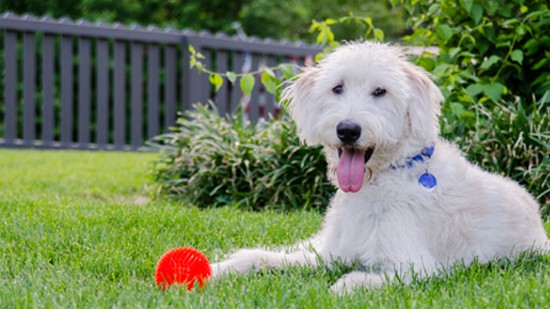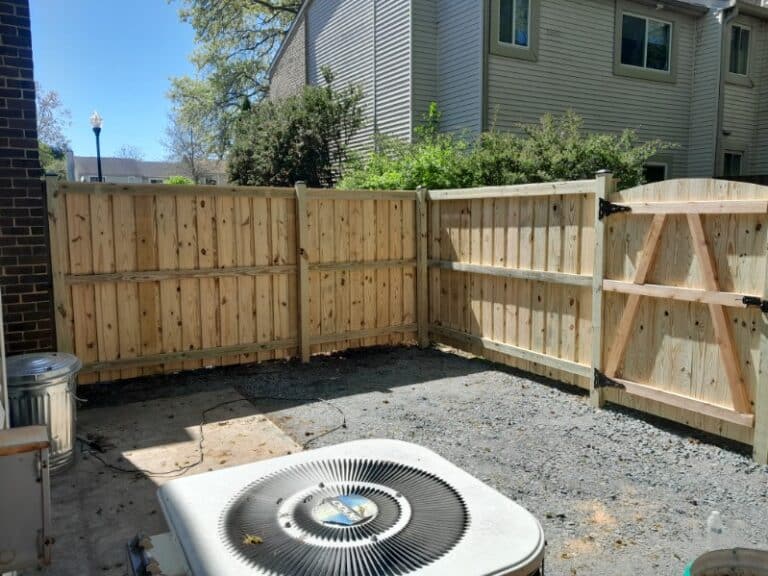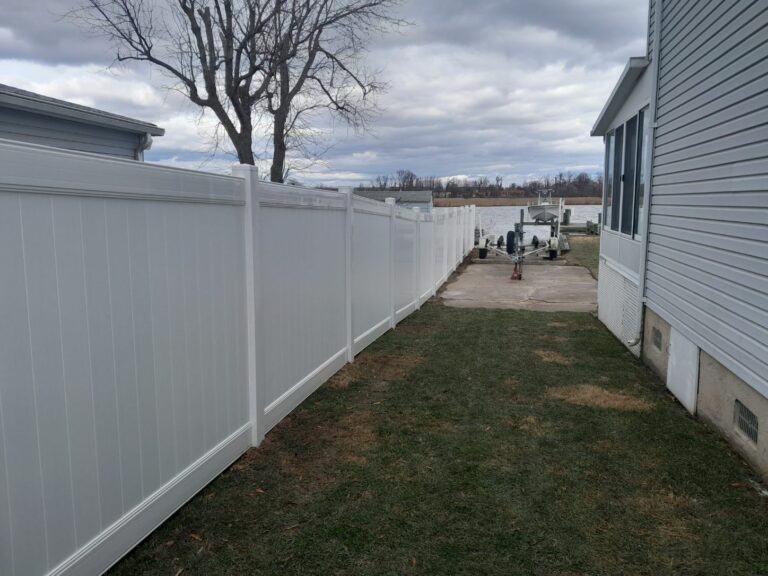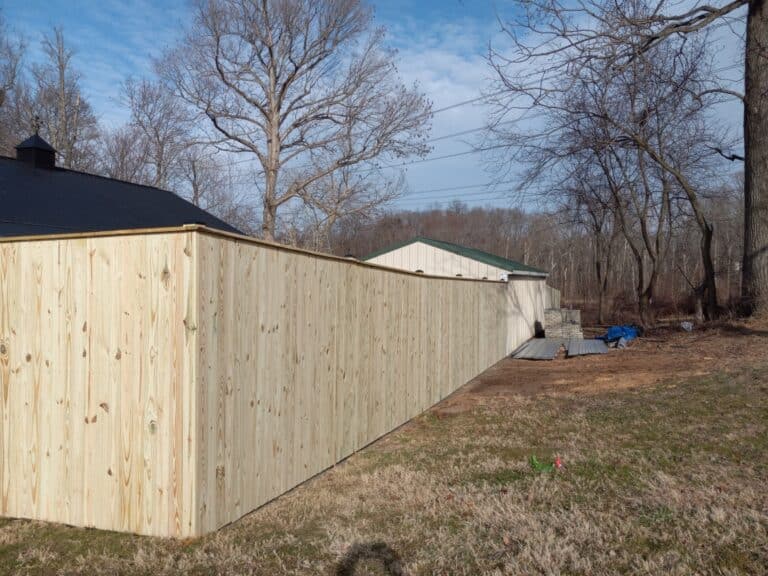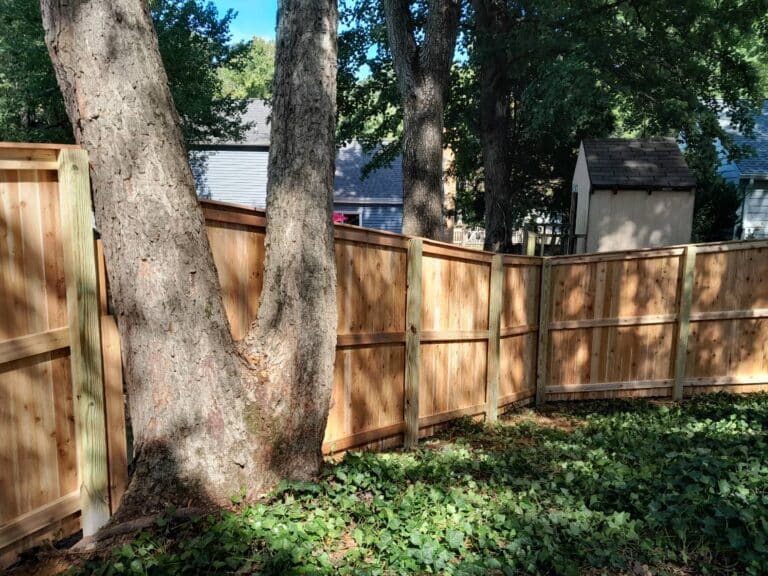A fence surrounding part or all of a yard usually means a pet lives there. In fact, by far one of the leading reasons homeowners install fencing is to keep their dogs safe and from wandering off. A fenced area provides a place to play and be outside, and helps keep neighbor dogs from intruding, as well as visits from random wild critters such as raccoons and coyotes. But not all fences are created equal; you have to plan strategically and choose a type of fence that best suits your needs.
Choosing a dog-friendly fence
When it comes time to plan a fence installation for your canine companion, several factors come into play. One fence type might work well for a beagle but fall short with a St. Bernard. Let’s look at the most common ingredients to consider for your fencing project:
Material type
This is the most critical decision in any fence install and carries more importance if the fence’s intent is to corral a dog. Some fence material is useless against a dog that can dig right under or chew through it. To that end, the best options are usually vinyl or a very hard and durable wood.
How big is your dog?
The size of your dog plays a major role in your final decision on what kind of fence to build. Small dogs are very adept at wiggling through even the smallest holes, and big dogs might get trapped in openings and hurt themselves. Be sure to choose fencing with adequate but safe spacing between posts that will serve your pet protection needs. But how do you know if your dog can fit through a picket-style fence, for example? Compare the space between pickets to your dog’s widest width. Use a tape measure or practice in a secure area with a couple of loose pickets.
Fence height
Closely related to the size of your dog, is fence height. You will need a fence tall enough to securely contain your pet and this decision again is based largely on what kind of dog you have. Many dog breeds seem to be part kangaroo and can jump surprisingly high. A little poodle won’t need a six-foot barrier, while an athletic and determined Border collie will find a way through a slipshod fence. Sturdiness can also be a factor with larger dogs. A muscular bulldog or Rottweiler will shoulder-check their way right through an inadequate fence barrier.
Visual barrier
Some dogs are just not content “locked up” in a yard and will bark or get otherwise riled up every time they see a squirrel amble by or people walk past on the sidewalk. It’s even more of a scene when they spot a potential playmate but can’t get through the fence. If this is the case, you might consider a full- or semi-privacy fence to help prevent your dog from seeing what’s on the other side.
For more information on installing fences for dog areas, contact All Around Fence at (443) 838-9374 or allaroundfenceanddecks.com.

